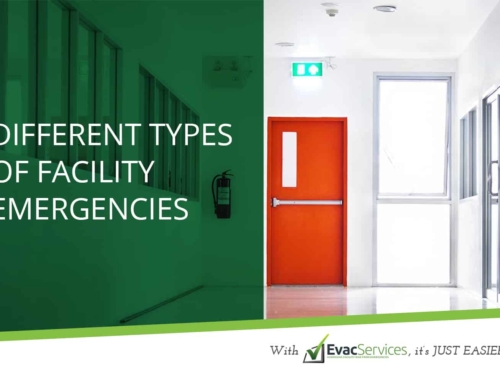Bushfire season is upon us; an evacuation plan is necessary to reduce the risk to people and property when a natural disaster strikes. With 30 degree plus temperature in Brisbane along with higher and drier conditions down the entire eastern seaboard, we need to be prepared. Recently, Sydney was covered with smoke caused by some hazard reduction burns in preparation for the bushfire season. According to the Office of Environment, this will continue throughout August.
It is important that you, your business and your people are prepared for the bush fire season. Having a plan will help you manage potentially devastating damages caused by bush fires. With a sound plan in place, it will be easier for your business to minimise losses, maintain business continuity, and recover quickly.
Bush fire Preparation Advice
Infrastructure Preparation
- Remove rubbish, leaf litter and vegetation situated near your building.
- Form a wide fire break around your building.
- Fit wire screens to doors, windows and vents. Seal all openings of roof cavities if applicable.
- Store flammable materials such as wood, gas, petrol and paint properly.
- Keep ladders handy for roof access (inside and out).
- Fit hoses to reach all parts of the building and gardens.
Staff Preparation
A well-developed evacuation plan can protect your business and staff in the event of a bushfire. It’s important that all occupants in your workplace understand the plan of action.
- Develop an assignment list for your staff to carry out in the event of a bushfire and make sure that this is frequently reviewed
- Discuss with your staff and develop an evacuation plan to secure your business in the event of a bushfire
Insurance Preparation
- Check if there is sufficient insurance to cover you in the event of a bushfire.
- Contact your insurance provider to verify if there are any distinct preparations you need to make preceding a declared bushfire event.
Business Documentation and Record Preparation
- Locate and store your valuable documentation in an easily transported and waterproof container.
- Back up your valuable data to a portable storage device and store it in a safe location.
Business Continuity and Emergency Plan Preparation
- Establish your business continuity and emergency plan.
- Distinctly identify and analyse the potential risks to your business from a bushfire.
- Consult with local authorities to gather relevant and critical information to incorporate into your plan.
- Develop daily maintenance and review strategies and update your plan as recommended.
- Store the copy of your business continuity and emergency plan off site in a safe, disaster proof location.
Evacuation Plan Preparation
- Check all possible risks and write up a plan around them to tailor a plan that suits your building needs.
- Have a precise series of command and train wardens in your building to order an evacuation or shutdown.
- Ensure specific evacuation procedures, including updated evacuation diagrams and accessible exit routes.
- Fire safety equipment should be available and accessible to all staff.
- Processes for accounting of personnel following an evacuation to ensure that everyone knows where to go after they have vacated a facility.
- Update contact lists of all employees to keep everyone informed and monitored.
Bushfires don’t keep to a schedule – They can happen at any time, any day. It is essential to develop an evacuation plan that suits your workplace to ensure that all employees can exit your building safely and make their way to a ‘safe haven’ in times of a natural disaster.
Here are five tips on how to assemble the best evacuation plan for bushfire season
-
Know your risks.
It is better to tailor your evacuation plan according to what your workplace needs. To do this, you must first assess your level of risks and types of emergency. Some buildings may have higher risks than others. Check all possible risks and construct your plan around them.
-
Identify emergency exit points.
Everyone must know where to exit in the safest way. Your evacuation plan needs to include diagrams and instructions on the escape procedure showing the safest exit routes. Your signage should be visible and indicate exits and maps showing the nearest exits available with suggested evacuation assembly areas or exit paths and roads to safe heavens.
-
Fire safety equipment should be accessible.
Hoses, fire extinguishers, hydrants, blankets and other safety equipment should be readily available to all employees. Take note that types of fire extinguishers should be tailored with the kind of risks you identify.
-
Update contact information for any tenants as well as your staff members.
Names and contact numbers should be available in the evacuation procedure. This will help you easily communicate and keep everyone properly informed.
-
Inform everyone about the Assembly Area or meeting point.
Be clear about Assembly Area and make sure you have identified alternate assembly areas.. They should be located a safe distance away from the building.
Planning and preparation helps ease anxiety, ensuring all staff and tenants have clear directions to follow during when emergencies strike this bushfire season. Evacuation plans could mean the difference between life and death. An ineffective evacuation plan can result in confusion, injury, and property damage. Think about all possible emergency situations and evaluate your workplace to see if it complies with your local bushfire service recommendations.
We can help you get started by coming up with an evacuation plan that fits your business needs to ensure your safety in the event of a natural disaster like a bushfire. Complete the form below, and our experts will help you get started.
[wpforms id=”1334″ title=”true”]









